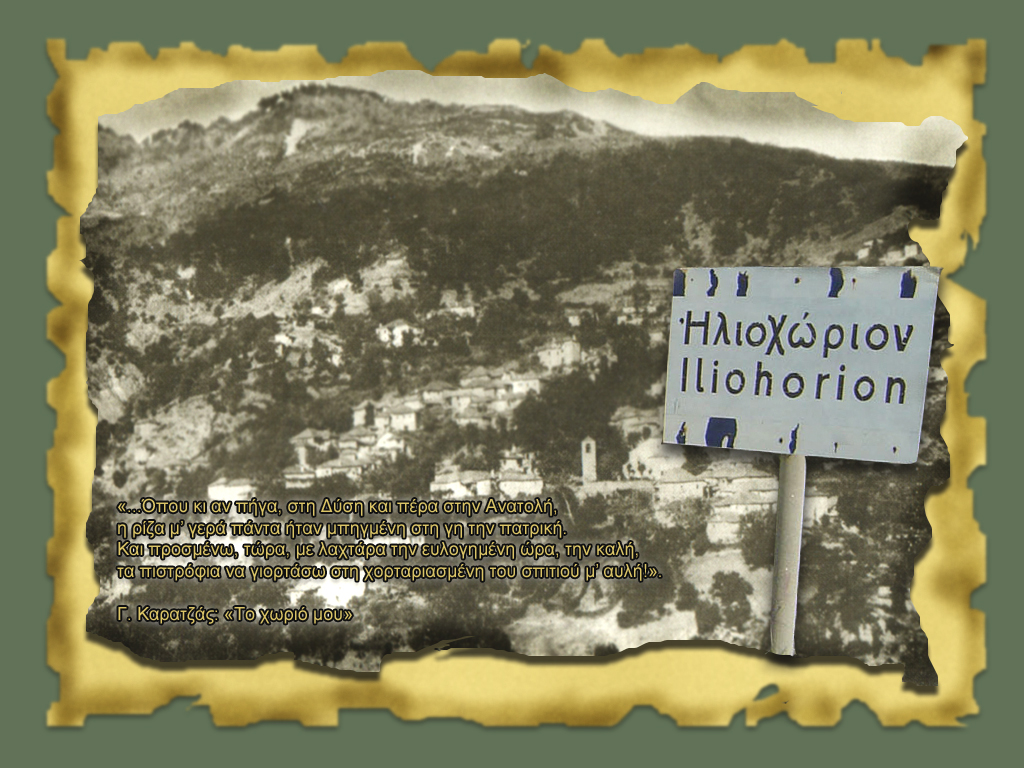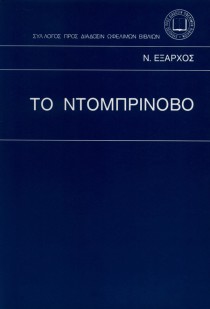PLACES TO VISIT

Anyone who loves touristic tours can follow the appropriate road signs placed on the side of the road. Inside of the village you can find the new main square which accommodates a building that used to be an elementary school that now has become the town hall offices. Click on the images in order to enlarge them.


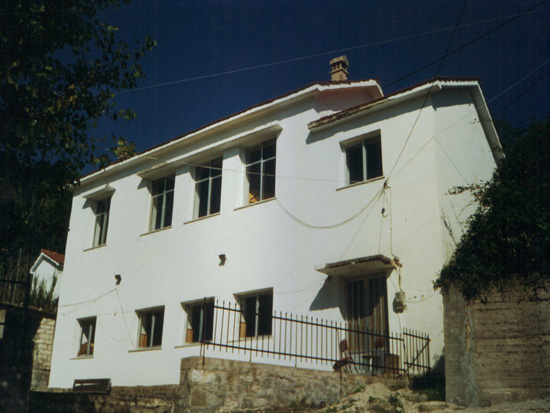

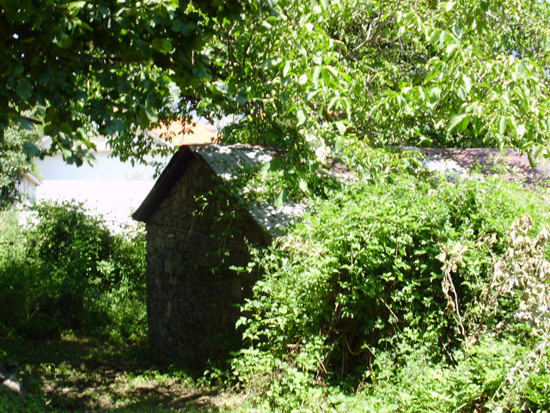
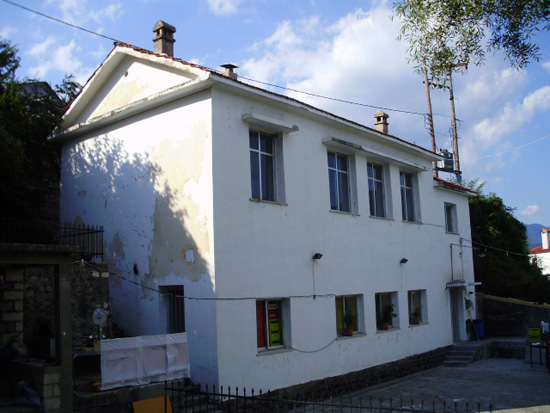
Following the way down the village, you arrive at Mesochori which means ''Center of the Village''. This was the old main square that extended up to Sochora. In this public square there is the famous plane-tree, one of the largest tree species of Greece.
The Plane-Tree (Aghios Nikolaos):
The plane tree is one of the most important naturalistic beauties, with a perimeter of 10.5 m, between the largest of Greece. Many tourists who have visited this plane tree have been astonished by its beauty. Some say that for 600 years it has been used for a meeting place after the mass. Currently, it is also a place for many festivities for the countrymen, where they meet to eat lunch that usually consists of meat and fish, in order to continue with the traditional dances of the place. The place is also suitable for childrensince there is a small park where they can play.For those who love outdoor sports there is also a small basketball court.
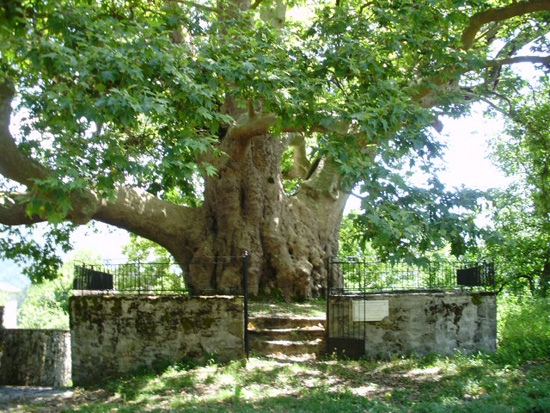
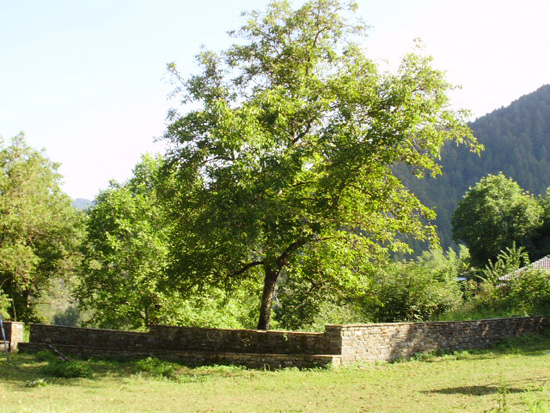
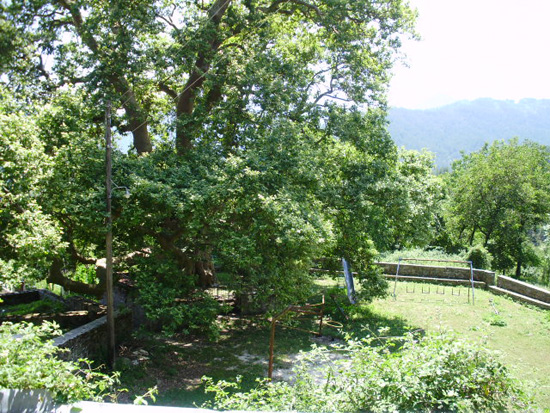
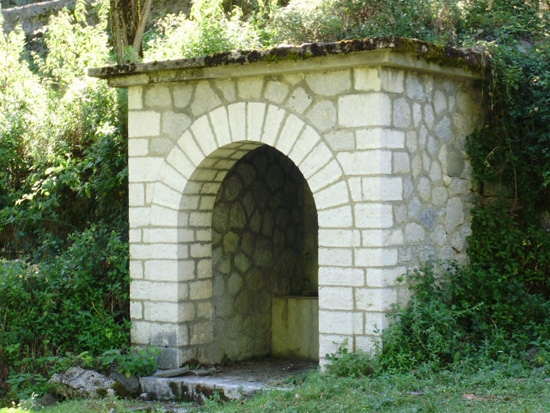
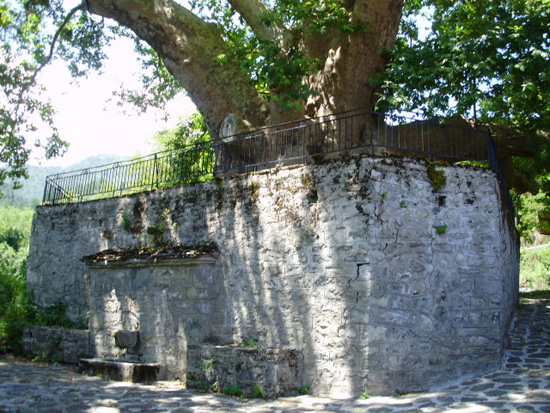
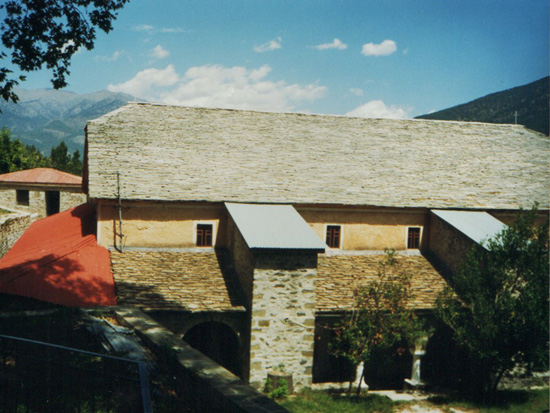
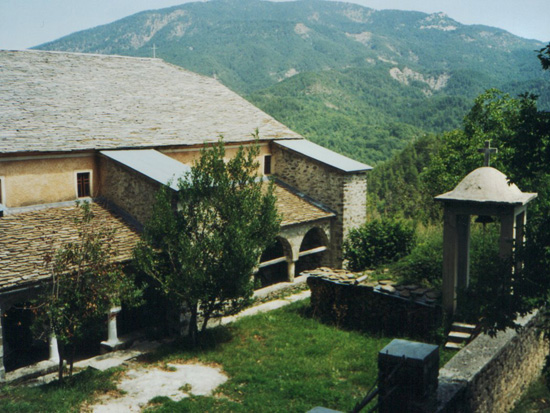

Besides the square you can find the church of Aghios Nikolaos, constructed in 1850, one of the biggest churches in Zagori. It has a wide courtyard where the countrymen relax after the celebrations, to exchange wishes and news of relatives. Inside the church, there is the altar in the center with chairs on the sides in rows, facing the altar. On the walls, there are precious icons and byzantine frescos of hagiography objects. The roof has been recently completely re-made, using big plates of slate that come from the distant Kavala. Continuing, after the big plane tree you can find the stone bridge of Peccios. If you keep going you can find the Church of Aghios Athanasios.
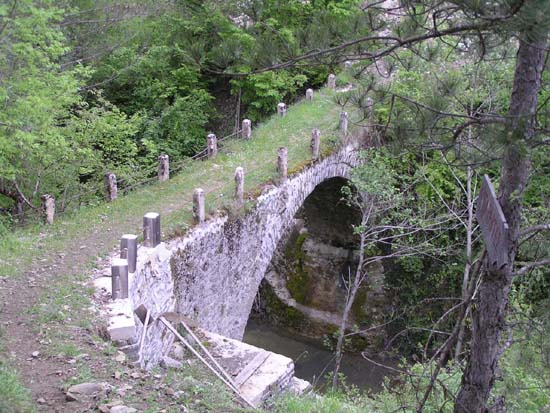
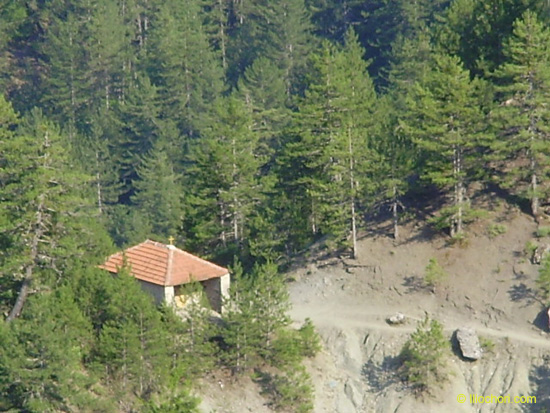
The Church of Aghios Athanasios
Η εκκλησία του Αγίου Αθανασίου βρίσκεται περίπου 500 μέτρα από το χωριό, κατά μήκος του μονοπατιού που οδηγεί προς τη Λάιστα. Σύμφωνα με ορισμένες μαρτυρίες, η εκκλησία κατασκευάστηκε περίπου το 1770 από τον μοναχό Βλάσιο, ως χώρος προσευχής.Στο παρελθόν ήταν καταφύγιο για Αλβανούς που πέρασαν από εκεί, μετά την πτώση του καθεστώτος Χότζα. Έφτασαν στην Ήπειρο λαθραία και εξόργισαν τον ναό ανάβοντας φωτιές, καταστρέφοντας εικόνες κ.λπ. Το 2015, η εκκλησία ανακαινίστηκε πλήρως και πλέον την επισκέπτονται τουρίστες που κατευθύνονται στους καταρράκτες Μπάλτα Ντι Στρίγκα.Ακολουθώντας το μονοπάτι προς τη δεξιά πλευρά, κοντά στον ποταμό Κρυοπόταμο, μπορείτε να επισκεφθείτε τα ερείπια του παλιού αλευρόμυλου με νερό. Λίγο πιο πέρα μπορείτε να βρείτε τις μεγάλες καταρρακτώδεις πηγές που ονομάζονται Μπάλτα Ντι Στρίγκα.
The Waterfalls of Balta Stringa:
Αναμφίβολα είναι ίσως το σημαντικότερο τουριστικό αξιοθέατο της χώρας.Οκαταρράκτης απέχει 20 λεπτά με τα πόδια από το Ηλιοχώρι, με σαφή σήμανση από την είσοδο της πόλης. Ο καταρράκτης βρίσκεται 780 μέτρα πάνω από την επιφάνεια της θάλασσας, στην πραγματικότητα αποτελείται από τρεις καταρράκτες.Αυτός που κλέβει την παράσταση είναι ο μεγαλύτερος, ύψους 25 μέτρων με μια μαγευτική πισίνα στη βάση του, με βάθος που ξεπερνά τα 5 μέτρα.Εδώ ακριβώς τον Οκτώβριο του 2009 η τηλεόραση του ΣΚΑΪ γύρισε ένα ντοκιμαντέρ για αυτή τη φυσική ομορφιά και την πόλη του Ηλιοχωρίου. Το 2011 δημιουργήθηκε ο νέος δρόμος που ξεκινά από τογεφυρι του Πέτσου μέχρι τους καταρράκτες, περνώντας δίπλα από την εκκλησία του Αγίου Αθανασίου. Η περιοχή γύρω από τον καταρράκτη είναι καλά οργανωμένη. Πάγκοι και πέτρινο τραπέζι έχουν τοποθετηθεί έτσι ώστε οι επισκέπτες να μπορούν να ξεκουράζονται και να απολαμβάνουν το μοναδικό θέαμα που προσφέρει αυτός ο πανέμορφος καταρράκτης. Σήμερα είναι ένας προορισμός για πεζοπόρους, τουρίστες από όλο τον κόσμο και κινηματογραφιστές που απαθανατίζουν αυτό το θέαμα με drones.
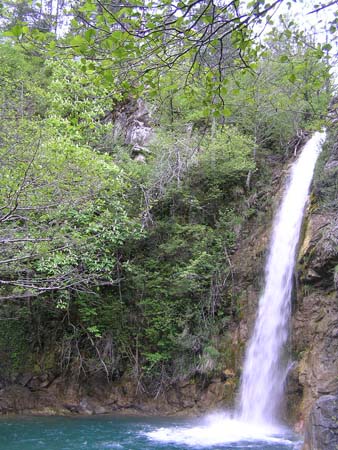
The Church of Prophet Elia:
Στην περιοχή της εκκλησίας του Αγίου Νικολάου, υπάρχει ένα αγροτικό μονοπάτι που οδηγεί μετά από 2 χιλιόμετρα σε μια μικρή λόφο, στην κορυφή του οποίου βρίσκεται μια μικρή εκκλησία αφιερωμένη στον Προφήτη Ηλία. Αυτός ο δρόμος συνεχίζει για την πόλη της Κόνιτσας, συνδέοντας τον δρόμο μεταξύ Ιωαννίνων και Θεσσαλονίκης. Στις 5 Ιουλίου 2021, ξεκίνησαν οι εργασίες κατεδάφισης και ανοικοδόμησης του ναού.
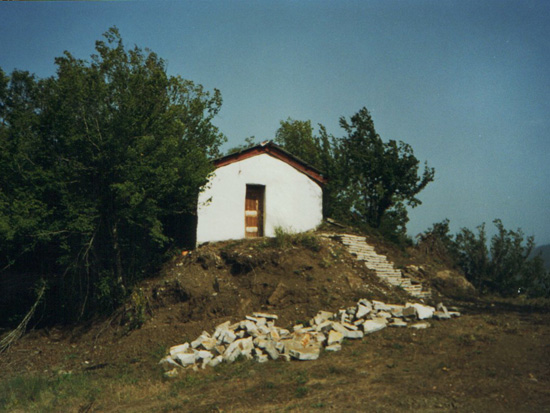
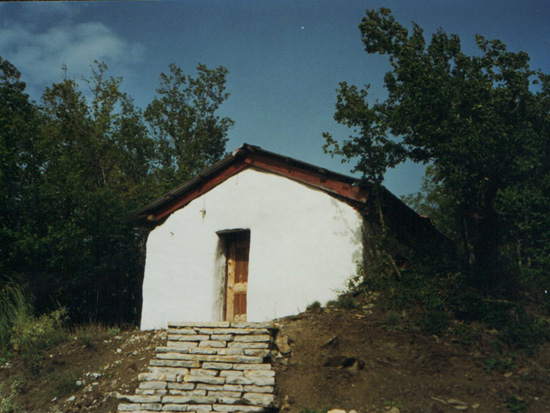
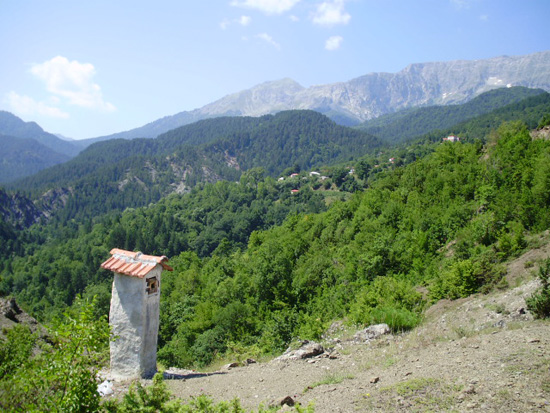
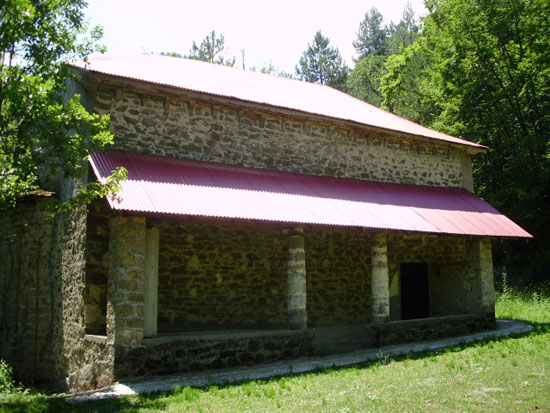
Not far from the central square of Iliochori is the church of Panagia, about 10 minutes from the village It was built in 1350 by Cretan monks. It was one of the most valuable churches before the Turks robbed it after killing AliPasha. In this church you can admire the ancient icons, the old altar and carved wooden furnishings. Opposite the church is a small, covered porch which also has a big bell with a Venetian Latin inscription. Near the church were discovered two well-preserved catacombs where the monks of the ancient monastery hid themselves during the Ottoman period, to escape the Turks.
In 1822, the soldiers of the Ottoman Sultan, having murdered Ali Pasha in the island of the lake Pamvotis islandof Ioannina,took possession of many monastery works in the region of Zagoria. The church of Panagia (dedicated to Virgin Mary) was found victim of robbers who did noy spare the monks, believing that they were hiding money in the temple. Adjacent to the church was the cemetery which in the twentieth century moved next to the church of Agios Nikolaos, due to the depopulation of the village. In 1943, it suffered greatly under the ruthless occupation of Nazi soldiers who spared no one. The Epirotean Costas Krystallis, contributed articles to a newspaper during that year, documenting the plight of the villages in Pindos and emphasizing the church of Panagia of Iliochori as a valuable source of historical information.
The River Rascianitis:
An interesting sight is the Rascianitis River, flowing downstream through the valley from the village and serving as a tributary to the great Aoos River, offering a great spot for fishing. Moreover, the location is an ideal destination for hiking or biking in one of the most picturesque and healthy landscapes. The road leading from Iliochori to Vrisochori extends further to Palioseli, a small village situated along the way, and crosses over the Aoos River through a sturdy bridge constructed a few years ago to replace the old one, which was carried away by winter floods. This road continues onward to the city of Konitsa, connecting to the Ioannina - Thessaloniki route.
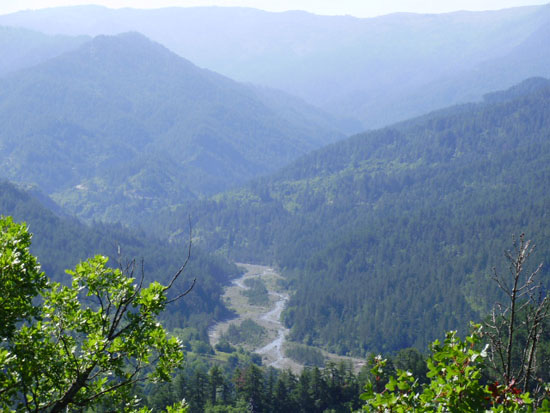
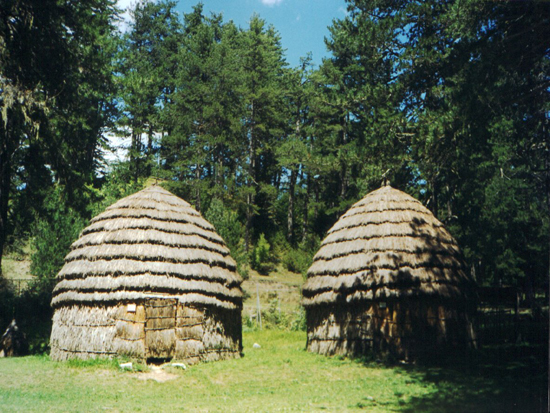


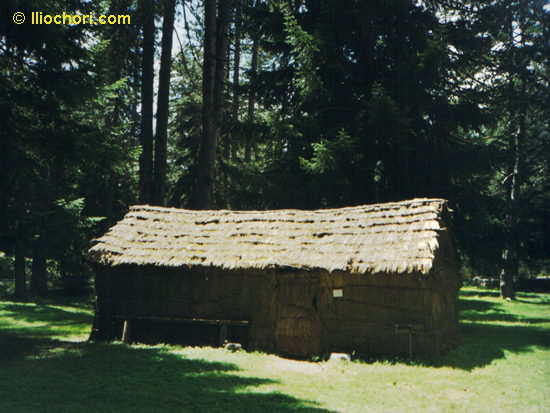
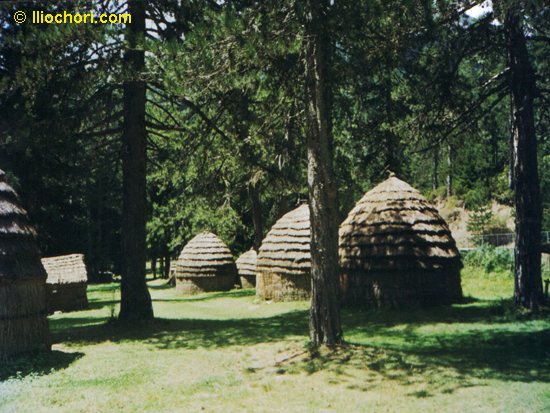
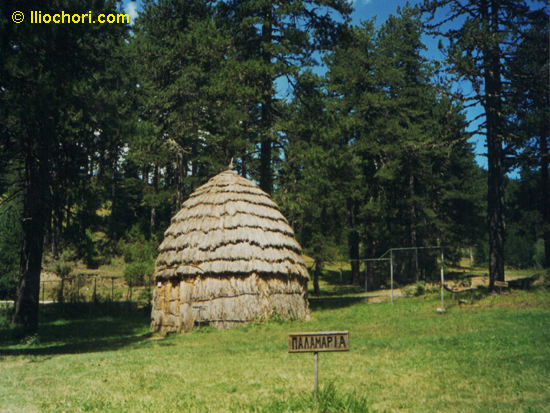
In Gyftocambos, the festivities include lively dances accompanied by an orchestra consisting of mandolin, clarinet, tambourine, and various soloists. People enjoy drinking, eating, and dancing throughout the celebration. On Sunday morning, professional dancers dressed in typical Epirus costumes take the stage and perform. The celebrations continue until the afternoon when attendees start dismantling their tents and head back to their homes. This communal event holds great significance, reminiscent of the times when flocks would move from the coasts to the lush green mountains of Epirus at the beginning of spring. The shepherds used to bring not only the flocks but also their families along, and some of them eventually settled in these mountain villages. From the village of Iliochori, you can admire the majestic Papingos mountain, where the den of the infamous bandit "Davelis" was once situated. Historians believe he spent a year in this den during the period when Epirus was under Turkish rule. Papingo is also a destination for Tsai pickers, who come to collect a variety of tea.
